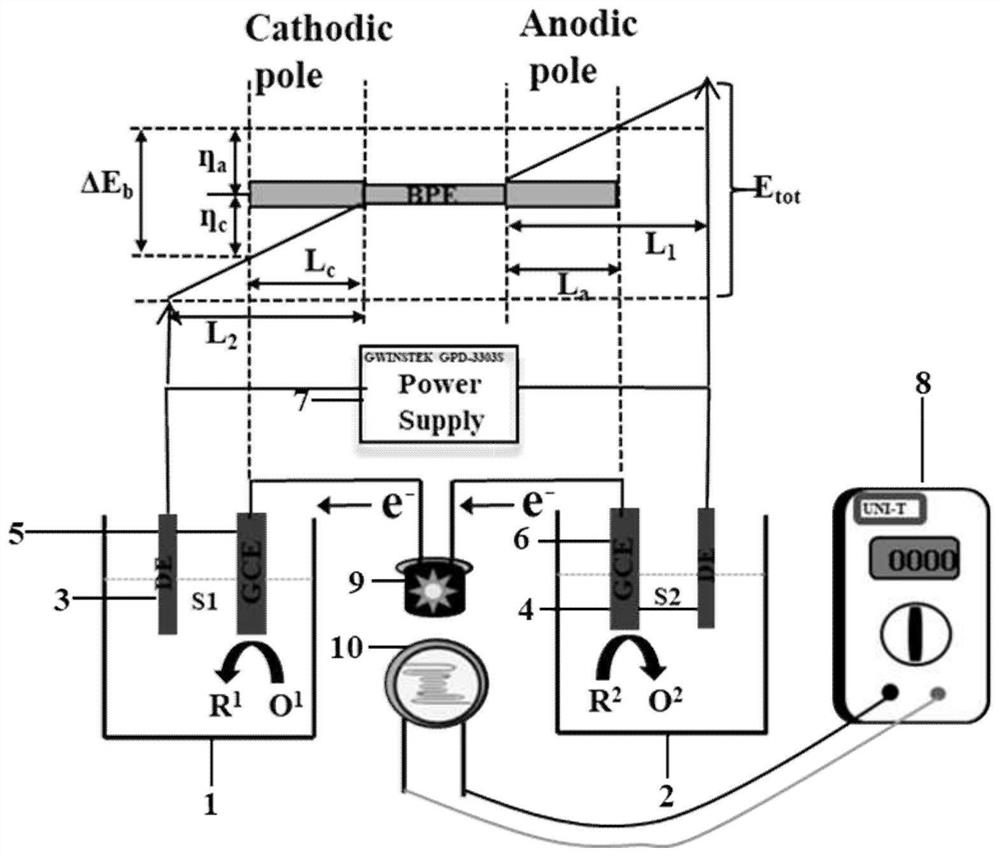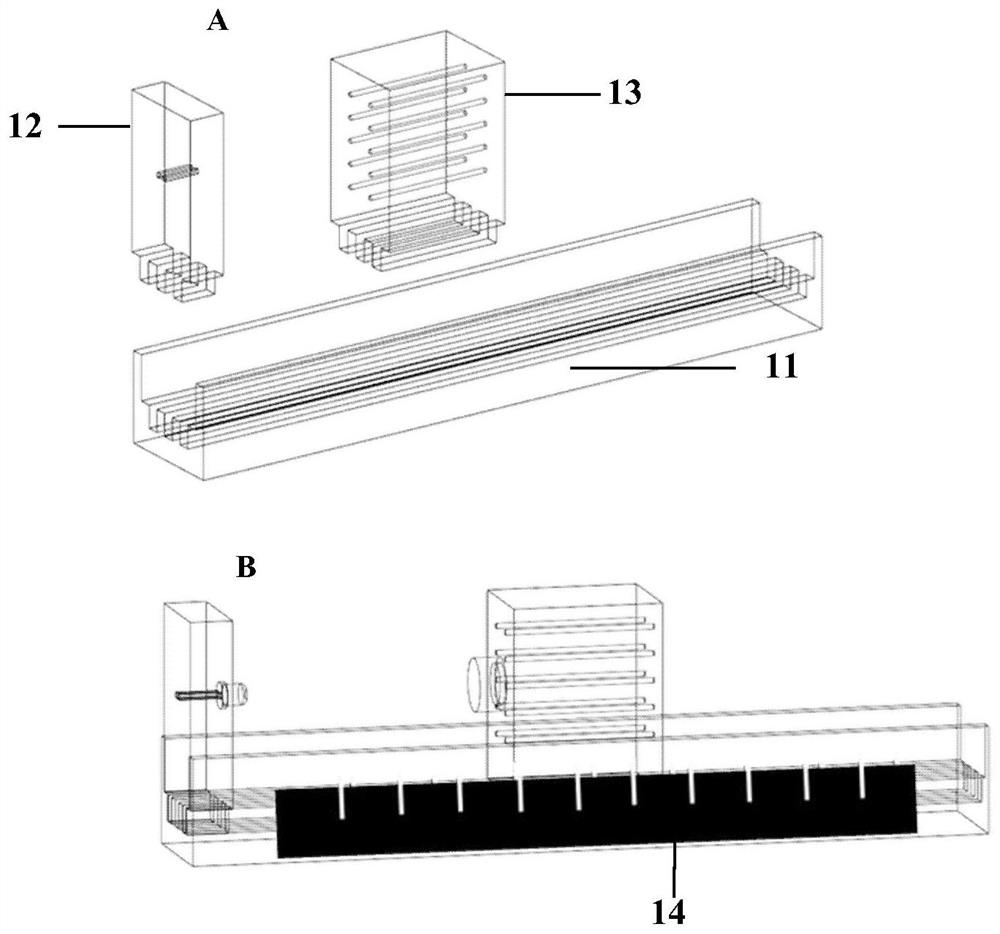A 3D printing device based on a bipolar electrode-light-emitting diode-photoresistor platform to detect hydrogen peroxide secretion from cells
A technology of 3D printing and cell secretion, which is applied in the direction of measuring devices, manufacturing auxiliary devices, and material analysis through electromagnetic means, which can solve the problems of restricting large-scale use, cumbersome steps, and expensive luminescent reagents, and achieve visualization and digitization. Avoid the interference of human factors, the effect of low price
- Summary
- Abstract
- Description
- Claims
- Application Information
AI Technical Summary
Problems solved by technology
Method used
Image
Examples
Embodiment 1
[0034] A BP-LED-E-LDR platform based on the detection of cell secreted H 2 o 2 The design and application of the LED-LDR fixture in the 3D printing device are as follows:
[0035] like figure 2 As shown in A, use the 3D printing drawing software to design the fixing device including the chute 11, the small slider 12 and the large slider 13, and then print the real object through the 3D printer. The 3D printer can choose rubber (rubber) soft elastic material , in the present invention, as long as the printed size and shape meet the requirements, that is, the printed chute 11, small slider 12 and large slider 13 conform to the experiment of the present invention, and the material is not the invention point of the present invention. Commercially available products can be used. Among them, the chute 11 is 150mm long, 25mm wide, and 20mm high. There are three slide rails with a width of 2.8mm inside. ×20mm), the two sides are closely attached to the front and rear surfaces thr...
Embodiment 2
[0041] A BP-LED-E-LDR platform based on the detection of cell secreted H 2 o 2 The 3D printed device under the optimal driving voltage of 4.1V, ΔR and cells in contact with different concentrations of H prepared in PBS 2 o 2 The linear relationship detection steps are as follows:
[0042] MCF-7 cells were cultured in culture flasks, and the medium was changed every two days. When the cells grow to 80-90% confluence, wash twice with PBS (0.01M, pH=7.4), then add 10mL of PBS, then put the culture bottle into the cell incubator and incubate for 5min, and finally collect the cells that have been in contact with the cells. PBS spare. PBS contacted with the above cells and standard H 2 o 2 Solution preparation with different concentration gradients including 1, 10 1 、10 1.5 、10 2 、10 2.5 、10 3 、10 3.5 、10 4 、10 5 、10 6 μM H 2 o 2 solution.
[0043] like figure 1 The entire detection device is constructed as shown, and the Pt electrodes 3 and 4 in the anode pool 1 ...
Embodiment 3
[0046] A BP-LED-E-LDR platform based on the detection of cell secreted H 2 o 2 Different numbers of MCF-7 cells in the 3D printed device secreted H 2 o 2 The detection method is as follows:
[0047] MCF-7 cells were cultured in culture flasks, and the medium was changed every two days. When the cells grow to 80-90% confluence, add 1 mL of trypsin to digest the cells. When the cells become round and fall off from the bottom of the culture bottle, add DMEM medium to stop the digestion, and draw part of the cell suspension for cell counting. Collect the cell suspension and centrifuge at 1000rpm for 5min in a centrifuge, discard the supernatant, then add 2.5mL PBS to resuspend the cell pellet, then add 20μL 10μg / mL PMA to stimulate the cells and place them in a cell culture incubator for incubation 5 min, then centrifuge and collect the supernatant and store it in the dark. Different numbers of cells collected (0, 2.5, 10, 15, 50, 100×10 5 Each / 2.5mL) PMA stimulation superna...
PUM
| Property | Measurement | Unit |
|---|---|---|
| thickness | aaaaa | aaaaa |
Abstract
Description
Claims
Application Information
 Login to View More
Login to View More - R&D
- Intellectual Property
- Life Sciences
- Materials
- Tech Scout
- Unparalleled Data Quality
- Higher Quality Content
- 60% Fewer Hallucinations
Browse by: Latest US Patents, China's latest patents, Technical Efficacy Thesaurus, Application Domain, Technology Topic, Popular Technical Reports.
© 2025 PatSnap. All rights reserved.Legal|Privacy policy|Modern Slavery Act Transparency Statement|Sitemap|About US| Contact US: help@patsnap.com



